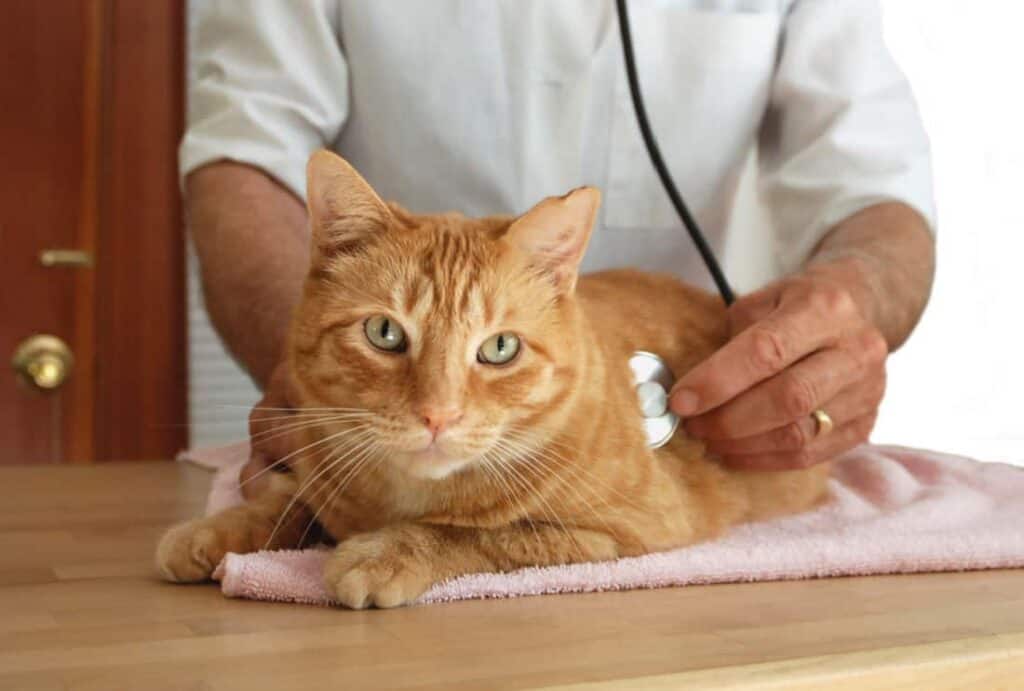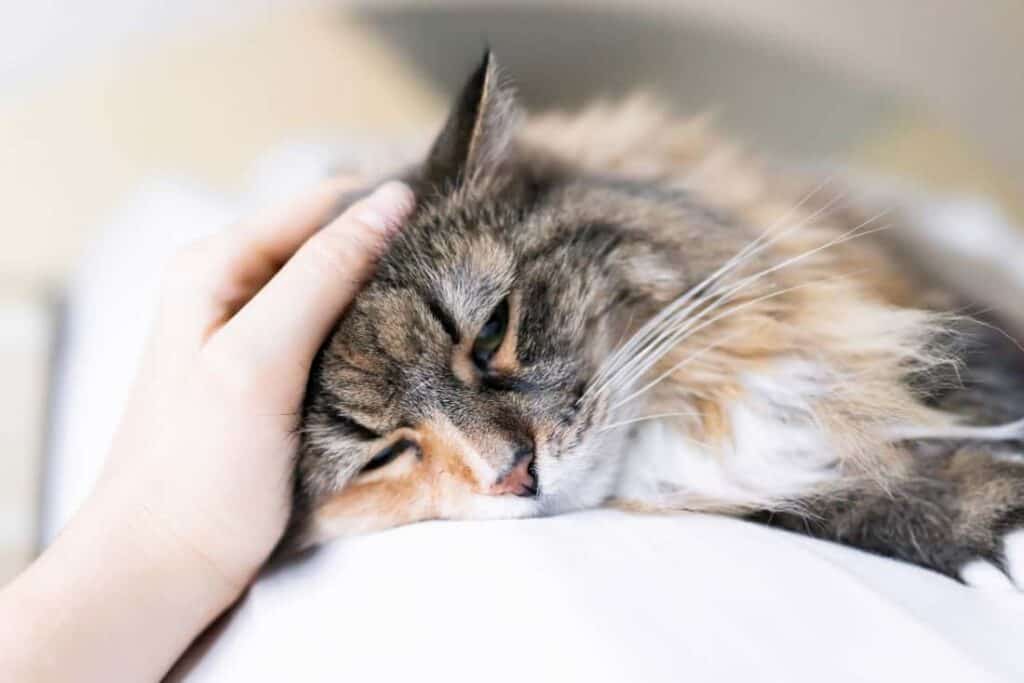Why Is My Cat Limping All Of A Sudden?

We all love our fur babies and would never want to see them in pain, so it would be quite concerning if you find your cat limping all of a sudden. We all know that cats are super curious creatures, and they tend to get themselves into some precarious situations, but you may be wondering why your cat is suddenly limping and what to do in this situation.
Many reasons could explain why your cat is limping all of a sudden, from a foreign object being stuck in its paw to an injury or pulled muscle, or even a chronic disease that affects the tissue surrounding its joints. Other issues could be causing your cat to limp; however, these are the most common.
If your cat is limping all of a sudden and you wish to learn what could be the cause of it and how you can go about treating it, continue reading for more information. You can also find some helpful advice that may be beneficial to you and your cuddly companion.
Common Reasons for Limping in Cats
As mentioned above, there are many factors that could contribute to your cat’s limping. The following list shows some reasons commonly seen in the veterinary practice that could be the cause:

- A foreign object is stuck in its paw/ingrown toenail
- A pulled muscle, ligament, or tendon
- Falling/jumping injury
- Getting hit by a car
- Wound from an altercation with another cat or wild animal
Now that you know some of the leading causes for limping in cats, let’s get into the rarer but not unheard of causes.
Uncommon Reasons for Limping in Cats
If the more common causes don’t tell you why your cat is limping, then your veterinarian may diagnose it with one of these uncommon conditions:
- Certain cancers
- Hip Dysplasia
- Neurological condition
- Osteoarthritis (typically seen in older cats)
- Parasitic infection that becomes abscessed
- Viral disease
Learning the common and uncommon reasons for limping in cats can give you an idea of what is wrong with your cat, but you won’t have a for-sure answer unless you follow through with the next steps.
What to Do if Your Cat is Suddenly Limping
So your cat is limping, and now you have a few ideas as to why that could be, but what do you do now? There are a few steps you should take before rushing off to the veterinarian.
The first thing you should do is a quick physical examination (if your cat will allow you to do so) to see if there are any obvious wounds or injuries that could be causing the limp. This way, you can take note of what you see and help your cat’s veterinarian get a better idea of what the issue could be.

Next, you should call your local veterinarian and explain the situation to them. In most cases, unless there is noticeable trauma the veterinarian will recommend some benign neglect. In layman’s terms, benign neglect means monitoring your cat and its behavior before taking any sort of action to see if its condition improves or worsens.
The reason a veterinarian may recommend benign neglect is that many times a cat will heal on its own without veterinary care, depending on the issue. There is no sense in giving an animal unnecessary pain medication or antibiotics if they don’t truly need them.
However, if your cat’s condition worsens, then you need to make the trip to the veterinarian and get your kitty checked out. It may need an x-ray or some other diagnostic testing performed.
How to Know When to Take Your Cat to the Vet
When it comes to pain, cats are masters at disguising when they are hurting. The main reason for this is that in the wild, they don’t want their enemies to see any signs of weakness. That is true for most animals.
It can be difficult at times to know if your cat is truly in pain or not. When you are doing your physical examination, you can gently squeeze the area(s) you think may be hurt. If your kitty cries out in pain, then you definitely want to have a discussion with the veterinarian.
Signs that Should Not Be Ignored
If you find that your cat has any of the following symptoms, call your veterinarian right away to make an appointment.
- Blood in its urine or stool
- Crying or moaning in pain
- Diarrhea
- Fever
- Labored breathing
- Loss of appetite
- Odd or out-of-character behavior
- Swelling or excessive heat coming from the wound or injured area
- Urinating or defecating outside of the litter box
- Vomiting
While some of these symptoms may not seem to be life-threatening, they can become an issue if they are left untreated. It is always better to be safe than sorry. When in doubt, call the veterinarian.
Veterinarians can take x-rays and perform diagnostic tests to see if there is a deeper issue such as cancer or an internal infection that needs to be addressed.
Treating Your Cat at Home

So, you found a foreign object in your cat’s paw, or perhaps it is suffering from an ingrown toenail. You may wonder if there is anything you can do at home before spending oodles of money on vet bills. The answer is yes; these issues can be treated at home, but it can be a monumental task if they are not receptive to the treatment because they are in pain.
Frankly, most cats do not want you to mess with them when they are hurting and as a result, you could be the one who ends up needing treatment. If you can have a friend or family member help you restrain your companion, that would be best for all involved. Receiving help with restraining it will also likely reduce the stress that your cat is experiencing.
Restrain Your Cat
It is difficult to restrain and treat a cat without help. The best way to restrain a feline is to wrap it in a towel like a burrito if possible. However, in some cases, this may not work as the towel could be covering the area you are trying to examine or treat. If using a towel is not an option, the next safest way to handle your injured cat is to scruff it.
Scruffing gives you more control of the cat’s head and allows you to do what you need to do without getting bitten. When done correctly scruffing does not hurt the cat. It actually causes them to become easier to handle as that is how their mother carried them when they were kittens.
Now that you know two different methods of restraining cats, you can begin with your at-home treatments.
Foreign Object Treatment
Sometimes, your cat can have a foreign object in its paw. This section gives details on how to treat the situation.
If you can clearly see the foreign object it is recommended that you use a pair of tweezers to see if you can extract it from the cat’s paw. If you are able to do so, congratulations! All you have to do now is properly clean the wound and have your cat go on its merry little way.

To clean or flush the wound, use saline solution or some warm soapy water and rinse thoroughly to be sure it is free of bacteria or anything else that could cause an infection to pop up.
In most cases, if you are able to remove the foreign object before there is an infection, a simple cleaning as directed above will usually take care of it. Cats are extremely resilient and can heal from things that you would never expect without any medicine.
If you pull the object from your cat’s paw and you see pus, the wound is infected. Call the veterinarian and see if they can prescribe antibiotics or an ointment to stop the infection from spreading and causing other issues.
Ingrown Toenail Treatment
The following information gives you the basic details of how to treat an ingrown toenail on your cat.
If you can see that your kitty has an ingrown toenail, the best way to handle it is to cut the toenail just above the “quick” (the little red/pink line near the base of the nail).
Once you have made a clean-cut, you can then use your tweezers to extract the end of the nail that has grown into the skin. This may be quite painful for your kitty, so use caution and watch out for those teeth and other claws.
Once the nail has been extracted, you can follow the same procedure as above by giving the wound a good cleaning and monitor your cat’s progress.
Final Thoughts
All in all, if you see that your cat is limping all of a sudden, don’t be too quick to panic. Check for any obvious injuries or wounds. If your cat doesn’t seem to be in pain, monitor him or her for a little while. If there is any doubt in your mind, it is always best to contact your veterinarian for advice on what steps need to be taken.
Sources:
We Love Cats and Kittens, Animal Wised, PetMD, Senior Cat Wellness, WikiHow
